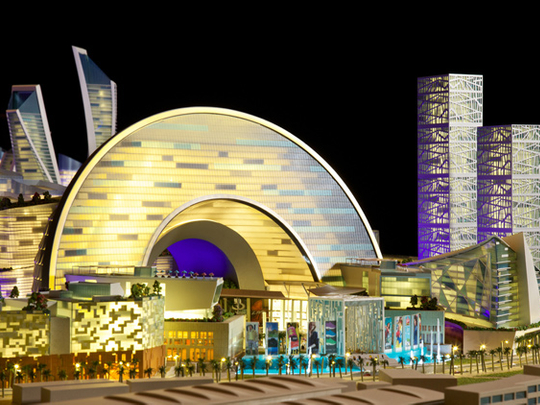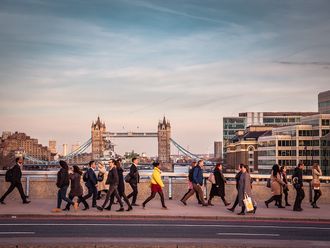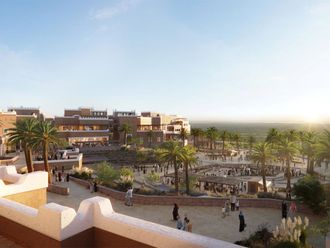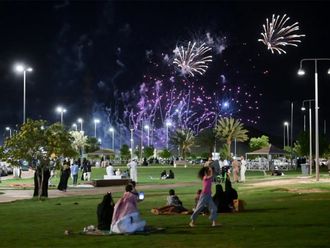
Dubai: Mall of the World, the latest addition to Dubai’s retail, hospitality and leisure offering, is expected to boost visitor numbers and further strengthen the emirate’s mall development pipeline, industry experts said.
Mall of the World was launched on Saturday by His Highness Shaikh Mohammad Bin Rashid Al Maktoum, UAE Vice-President and Prime Minister and Ruler of Dubai.
The focus of activity in Dubai has shifted towards the retail and hospitality sectors as development ramps up in the lead up to the World Expo 2020, which Dubai won the bid to host last November, real estate consultancy Cluttons said in a statement.
“Dubai has a significant portfolio of existing shopping malls and the string of new mall developments looks set to push Dubai further ahead of the region’s other emerging economies,” stated Faisal Durrani, international research and business development Manager at Cluttons.
The consultancy expects some 7 million square feet of new malls with a size of over 1 million square feet to enter the market over the next two years, apart from the current mall expansion activity in the city.
The Dubai Financial Market also welcomed the news. The index went up 4.41 per cent on Sunday to end at 4,593.57.
Located along Shaikh Zayed Road, Mall of the World will occupy 8 million square feet. The mall’s retail area will be connected to 100 hotels and service apartments offering 20,000 rooms. The masterplan includes wellness resorts, cultural theatres and an indoor park.
“The Mall of the World will pave the way for the next generation of the city’s malls, where the shopping element is combined in equal parts with entertainment and leisure facilities, creating destinations in theory own right, while catalysing the development of wider surrounding areas,” Durrani said.
The cost and timeline for completion of the project was not disclosed by its developer Dubai Holding. When enquired by ‘Gulf News’, no one at Dubai Holding was available to comment on Sunday. “Anchored by a mall, the destination seems to be planned as new and additional centre of Dubai,” said Chiheb Ben Mahmoud, executive vice-president and head of hotels and hospitality group for the Middle East and Africa at real estate consultancy JLL.
Property developer Nakheel’s Deira Islands Mall is the second largest shopping mall in Dubai’s new mall development pipeline after Mall of the World, occupying 6.7 million square feet, according to data by Cluttons.
Once complete, the Mall of the World project is expected to attract 180 million visitors a year.
“DTCM [Dubai Department of Tourism and Commerce Marketing] plays a central role in coordinating the activities of industry and public sector partners to expand existing attractions and create new ones — like The Mall of the World — to enhance the overall visitor experience. We look forward to continuing our work with private sector partners as well as government agencies on this project,” said Issam Abdul Rahim Kazim, CEO of the Dubai Corporation for Tourism and Commerce Marketing (DCTCM), an affiliate of DTCM, told ‘Gulf News’ in an emailed statement.
Hotel operators keen
With 100 hotels planned as a part of the development, hotel operators have expressed keen interest in the project.
The Rezidor Hotel Group, which has Radisson Blu and Park Inn by Radisson in its portfolio, is “in the process of initiating discussions” with Dubai Holding, which is handling the project, according to Elie Milky, the company’s director of business development for the Middle East and Africa.
“We are definitely looking at hotel opportunities in Mall of the World and to continuing to contribute to the growth vision of Dubai and the UAE, particularly in family tourism,” Milky said.
The Rezidor Hotel Group is considering introducing its mid-scale brand Park Inn by Radisson, Radisson Red, Radisson Blu and Quorvus Collection, in the new development.
“The inclusion of theatres, theme parks and medical tourism facilities along with the world class mall will certainly complement a wide array of hospitality projects [hotels and serviced apartments] needed to cater to related demand,” Milky said.
Other hotel operators have echoed similar views.
“Mall of the World is a destination which attracts our interest however the development is very new and there is nothing we can confirm in these very early stages,” said a spokesperson for US-based Hilton Worldwide, in an emailed statement.
Similarly, Accor said that it is interested in opening hotels in the development but it is not in discussions at present.
“Every project that comes to Dubai is good for the destination, and if it’s good for the destination, then it’s good for all of us,” said Pascal Gauvin, COO of InterContinental Hotels Group for India, the Middle East and Africa.
Marriott International, on the other hand, will not announce new properties in the Middle East and Africa at present other than those in its pipeline, Alex Kyriakidis, president and managing director of Marriott International for the Middle East and Africa, said in an emailed statement.
Analysts said that apart from growing Dubai’s visitor numbers, the project will expand Dubai’s range of accommodation.
It is understood that the hotels will have a relatively small size compared to the current average hotel size, according to JLL’s Ben Mahmoud.
The addition of 20,000 rooms to the 16,000 rooms that are expected to be delivered in three to four years, could meet demand in the market between now and 2020. But there is still room for growth, said Christopher Hewett, senior consultant at TRI Hospitality Consulting.
Hewett, however, does not expect an excess in hotel supply after 2020. Ben Mahmoud said that Dubai would need to attract more than 20 million visitors per year after 2020 to match the supply.
Dubai aims to double the number of hotel rooms to attract 20 million visitors per year by 2020 from 10 million in 2012, under the tourism vision announced in 2012.
“The increase in supply is based on the increase in demand,” Hewett said.












